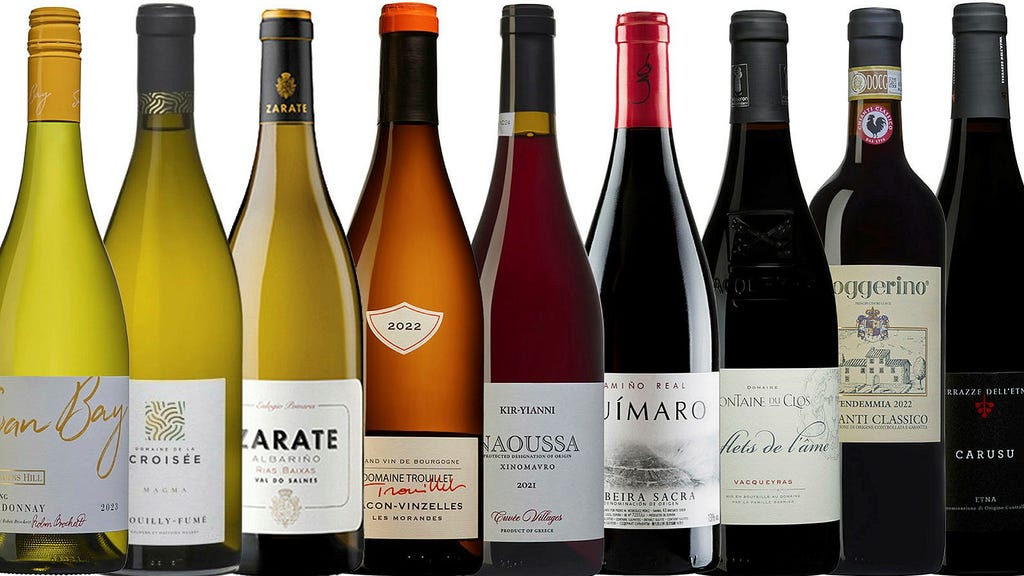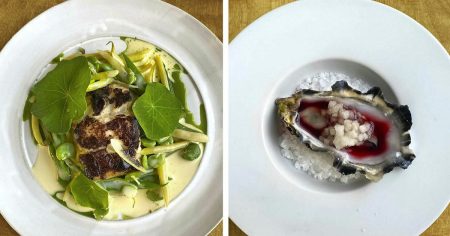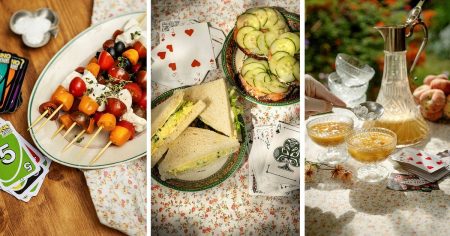This article reviews ten wines recently or soon-to-be released through Systembolaget’s temporary assortment (TS). Each wine receives a perfect 5-point rating, indicating a strong recommendation from the publication, alongside a quality score out of 100. The reviews highlight tasting notes, food pairing suggestions, and availability information, providing a concise guide for wine enthusiasts.
The selection features a diverse range of wines spanning various regions and grape varietals. For red wine lovers, options include the Kir-Yianni Naoussa Xinomavro from Greece, made with the indigenous Xinomavro grape, offering a profile similar to Nebbiolo with bright red fruit and firm tannins, suitable for aging and pairing with creamy mushroom risotto. From Italy’s volcanic slopes of Mount Etna, the Terrazze Dell’Etna Carusu presents a value-driven introduction to the region, featuring notes of candied cherry, orange peel, and licorice, perfectly complementing homemade caponata. Spain contributes the Guímaro Camino Real, a field blend predominantly Mencía, exhibiting floral aromas, raspberry and blueberry fruit, and a polished palate reminiscent of Pinot Noir. Finally, the Fattoria Poggerino Chianti Classico from Tuscany offers a vibrant expression of Sangiovese with pronounced cherry flavors and a structured finish that begs for tomato-based pasta dishes. Another full-bodied red for winter is the Fontaine du Clos Vacqueyras Reflets de l’Âme from the Rhône Valley, a blend of Grenache and Syrah with rich dark fruit, licorice, and lavender notes, comparable to wines from Châteauneuf-du-Pape and ideal with hearty stews.
White wine enthusiasts are equally well-catered for. The Scotchmans Hill Swan Bay Chardonnay from Australia exemplifies the modern, unoaked style with restrained fruit and refreshing citrus notes, perfect for casual enjoyment. From Burgundy, the Domaine Trouillet Mâcon-Vinzelles Les Morandes showcases classic Chardonnay characteristics of ripe citrus, apricot, and a Chablis-like minerality, destined for pairings with delicate fish and beurre blanc. Moving to the Loire Valley, the Domaine de la Croisée Pouilly Fumé Magma delivers a powerful Sauvignon Blanc experience with smoky notes, citrus blossom, and a rich, textured palate, ideal for seafood like oysters or crab. Spain contributes the Zarate Albariño from Rías Baixas, a crisp and structured wine with hints of white peach and grapefruit, showcasing the quintessential Albariño profile, perfect alongside tuna pasta.
The wines featured represent a balanced selection of both Old World and New World styles. From the elegant minerality of French Burgundy and Loire Valley wines to the vibrant fruit-forward expressions from Australia, Italy, and Spain, the list caters to a broad spectrum of palates. The inclusion of wines made from indigenous varietals like Xinomavro and Mencía adds further intrigue, providing an opportunity to explore lesser-known grapes and regions.
Beyond the tasting notes and pairings, the reviews provide practical information for consumers. The release dates and bottle quantities are explicitly stated, allowing readers to plan their purchases accordingly. The Systembolaget product codes (TS numbers) are also included, simplifying the process of locating these wines within Systembolaget’s extensive inventory. This clear and concise presentation of information makes the article a valuable resource for anyone navigating the world of wine.
A key takeaway from this article is the emphasis on value. While not necessarily inexpensive, the recommended wines are positioned as offering exceptional quality for their price point. The article highlights both the typicity of the wines, meaning their adherence to the characteristic flavors and aromas of their respective regions and grape varieties, as well as their overall balance and complexity. This focus on quality and value makes the recommendations particularly appealing to consumers seeking wines that deliver an enjoyable drinking experience without breaking the bank.
The concluding section of the article clarifies the rating system employed by the publication. The dual grading scale, using both a 1-5 star rating for overall recommendation and a 100-point scale for quality assessment, provides a comprehensive framework for evaluating the wines. This transparency enhances the credibility of the reviews and allows readers to interpret the ratings within a well-defined context. Furthermore, the inclusion of definitions for the quality score ranges, from ”underkänt” (under approved) to ”världsklass” (world-class), offers further granularity and understanding of the scoring system. This detailed explanation empowers the reader to make informed decisions based on their personal preferences and desired quality level. Finally, the article provides a link to a Facebook group for further discussion and sharing of opinions and recommendations, fostering a sense of community amongst wine enthusiasts.














